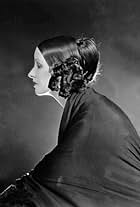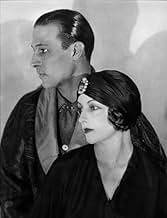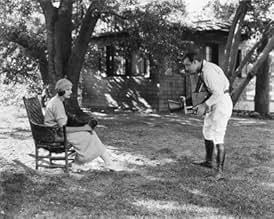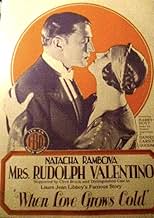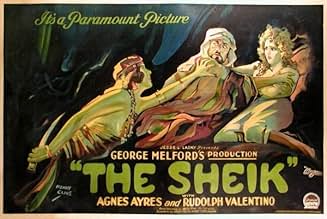Natacha Rambova(1897-1966)
- Costume Designer
- Actress
- Writer
Primarily famous as the wife of screen idol Rudolph Valentino, Natacha Rambova was also a talented dancer and an innovative set designer, bringing the Art Deco style to Hollywood for the first time. At the age of 17 she became
a protégé and lover of Russian ballet Svengali Theodore Kosloff, a brilliant but manipulative dancer who shot her in the leg when she finally escaped from his dance company. She was engaged as an art director by Alla Nazimova, the exotic, histrionic
bisexual actress. Rumours abounded that Rambova herself was sexually involved with Nazimova, but none have ever been proven, and Rambova professed to dislike the lesbian subculture.
Rambova's set designs and costumes were enormously innovative, influenced by Art Nouveau and Art Deco. Legendary French artist Erté professed himself a fan of her work. Her dramatic set and costume designs for Nazimova's Salomé (1922) were based on Aubrey Beardsley's famous illustrations for Oscar Wilde's play.
She met Rudolph Valentino when he was working with Nazimova on Camille (1921). At the time he was relatively unknown, The Four Horsemen of the Apocalypse (1921) (made the same year) being the hit that propelled him into the stratosphere. Soon, the shy Valentino began wooing the exotic former ballerina, and they eloped in May 22nd 1922. This event was to produce a scandal, as it was revealed that Valentino was not legally divorced from his former wife Jean Acker. After being charged and fined for bigamy, the couple quietly re-married the following year.
Valentino's association with Rambova was to prove both his greatest pleasure and his greatest pain. She immediately took over the management of his career, rejecting his usual stereotypical roles as a grunting Italian Stallion in favor of highbrow pictures such as the disastrous Monsieur Beaucaire (1924), a powdered-wig drama which did nothing to allay rumors that theirs was a 'lavender marriage' - a union of convenience between two homosexuals. Despite Natacha's admirable aim to free her husband from the constraints of the studio and eventually begin a production company of their own, his career was in tatters. Anxious to get his career back on track, he signed contracts with producers, who expressly forbid Rambova from being present on his film sets.
The painful end to their marriage in 1926 came though, because Valentino wanted to have children, while Rambova didn't. His career was back on track, but little more than six months later, he was hospitalized. On his death bed, he asked for Rambova wanting her by his side, but she was in Europe. When she heard of his dire condition, she too reached out to him, and she and Valentino exchanged loving telegrams. She believed that a reconciliation had taken place. But his condition worsened and he soon died of a ruptured stomach ulcer. Rambova was reportedly devastated.
After her marriage to Alvaro de Urzaiz in the 1930s, Rambova left America for Spain. Reporters remarked that her second husband physically resembled Valentino, suggesting that Rambova never got over her first husband. She lived through the Spanish Civil War with de Urzaiz, but the marriage ended in divorce, for the same reason that her first marriage ended, because her husband wanted children, while she didn't.
Her interest in mysticism evolved into scholarly study of ancient cultures and Jungian psychology. Her collection of Far Eastern and Egyptian art was of museum quality.
She died at 69 of scleroderma, a painful stomach condition which, to the modern eye, was clearly brought on by the anorexia nervosa from which she suffered all her life.
Rambova's set designs and costumes were enormously innovative, influenced by Art Nouveau and Art Deco. Legendary French artist Erté professed himself a fan of her work. Her dramatic set and costume designs for Nazimova's Salomé (1922) were based on Aubrey Beardsley's famous illustrations for Oscar Wilde's play.
She met Rudolph Valentino when he was working with Nazimova on Camille (1921). At the time he was relatively unknown, The Four Horsemen of the Apocalypse (1921) (made the same year) being the hit that propelled him into the stratosphere. Soon, the shy Valentino began wooing the exotic former ballerina, and they eloped in May 22nd 1922. This event was to produce a scandal, as it was revealed that Valentino was not legally divorced from his former wife Jean Acker. After being charged and fined for bigamy, the couple quietly re-married the following year.
Valentino's association with Rambova was to prove both his greatest pleasure and his greatest pain. She immediately took over the management of his career, rejecting his usual stereotypical roles as a grunting Italian Stallion in favor of highbrow pictures such as the disastrous Monsieur Beaucaire (1924), a powdered-wig drama which did nothing to allay rumors that theirs was a 'lavender marriage' - a union of convenience between two homosexuals. Despite Natacha's admirable aim to free her husband from the constraints of the studio and eventually begin a production company of their own, his career was in tatters. Anxious to get his career back on track, he signed contracts with producers, who expressly forbid Rambova from being present on his film sets.
The painful end to their marriage in 1926 came though, because Valentino wanted to have children, while Rambova didn't. His career was back on track, but little more than six months later, he was hospitalized. On his death bed, he asked for Rambova wanting her by his side, but she was in Europe. When she heard of his dire condition, she too reached out to him, and she and Valentino exchanged loving telegrams. She believed that a reconciliation had taken place. But his condition worsened and he soon died of a ruptured stomach ulcer. Rambova was reportedly devastated.
After her marriage to Alvaro de Urzaiz in the 1930s, Rambova left America for Spain. Reporters remarked that her second husband physically resembled Valentino, suggesting that Rambova never got over her first husband. She lived through the Spanish Civil War with de Urzaiz, but the marriage ended in divorce, for the same reason that her first marriage ended, because her husband wanted children, while she didn't.
Her interest in mysticism evolved into scholarly study of ancient cultures and Jungian psychology. Her collection of Far Eastern and Egyptian art was of museum quality.
She died at 69 of scleroderma, a painful stomach condition which, to the modern eye, was clearly brought on by the anorexia nervosa from which she suffered all her life.
